Showing Spotlights 89 - 96 of 559 in category All (newest first):
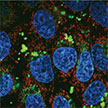 By using rod-shaped nanoparticles, in combination with inhibitors to other uptake pathways, researchers achieved targeting cancer cells over healthy cells.
The possible benefits from this novel technique are twofold: Restricting healthy cells from taking anticancer drugs to help reduce the side effects of drugs for patients; and helping overcome chemoresistance (the uptake of the chemo drug into healthy cells in the tumor setting is one of the main causes of chemoresistance).
By using rod-shaped nanoparticles, in combination with inhibitors to other uptake pathways, researchers achieved targeting cancer cells over healthy cells.
The possible benefits from this novel technique are twofold: Restricting healthy cells from taking anticancer drugs to help reduce the side effects of drugs for patients; and helping overcome chemoresistance (the uptake of the chemo drug into healthy cells in the tumor setting is one of the main causes of chemoresistance).
Jun 10th, 2021
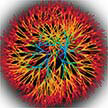 Nature has developed excellent biolubricating systems but onnce biolubrication for instance of synovial joints of osteoarthritis patients breaks down, relief has to come from partially or fully synthetic biolubricants - such as polymeric micro- or nanoparticle-based lubricants - that replace the depleted natural substances. Researchers have now demonstrated that phytoglycogen nanoparticles - single-molecule highly branched polysaccharides extracted from sweet corn kernels - are a highly effective biolubricating material.
Nature has developed excellent biolubricating systems but onnce biolubrication for instance of synovial joints of osteoarthritis patients breaks down, relief has to come from partially or fully synthetic biolubricants - such as polymeric micro- or nanoparticle-based lubricants - that replace the depleted natural substances. Researchers have now demonstrated that phytoglycogen nanoparticles - single-molecule highly branched polysaccharides extracted from sweet corn kernels - are a highly effective biolubricating material.
May 25th, 2021
 When experimental biomedical research results using only one sex are extrapolated to both sexes, unintended harmful consequences to the neglected sex can be the result. Nevertheless, it is still the case that only a small number of published articles report the sex of biosystems used in their study. Many researchers are still using only one sex of biosystems - e.g., cells, tissues, or animals - and apply the results to both males and females. And with the emergence of nanomedicine, the importance of sex in biomedical research has become even more obvious.
When experimental biomedical research results using only one sex are extrapolated to both sexes, unintended harmful consequences to the neglected sex can be the result. Nevertheless, it is still the case that only a small number of published articles report the sex of biosystems used in their study. Many researchers are still using only one sex of biosystems - e.g., cells, tissues, or animals - and apply the results to both males and females. And with the emergence of nanomedicine, the importance of sex in biomedical research has become even more obvious.
May 20th, 2021
 Inspired by the silk spinning of spiders, researchers have developed a facile strategy to artificially create natural, silk-like hierarchical fibers. They demonstrate the creation of biomimetic and highly bioactive materials by artificially manipulating the self-assembly of silk protein molecules. This work contributes to the understanding of the natural silk spinning process of spiders and provides a strategy for the design and development of advanced fibrous biomaterials for various applications.
Inspired by the silk spinning of spiders, researchers have developed a facile strategy to artificially create natural, silk-like hierarchical fibers. They demonstrate the creation of biomimetic and highly bioactive materials by artificially manipulating the self-assembly of silk protein molecules. This work contributes to the understanding of the natural silk spinning process of spiders and provides a strategy for the design and development of advanced fibrous biomaterials for various applications.
May 3rd, 2021
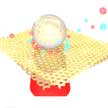 Researchers demonstrate label-free chiral detection of metabolic molecules at picomolar level through microbubble-induced rapid accumulation of biomolecules on plasmonic chiral sensors, which shows a 10-million times enhancement in sensitivity comparing to state-of-the-art plasmonic chiral sensors. The researchers achieved their ultrahigh sensitivity in chiral sensing of biomolecules by utilizing two enhancement mechanisms: the microbubble-induced accumulation of biomolecules onto the chiral plasmonic substrates; and the subsequent plasmon-enhanced chiral sensing.
Researchers demonstrate label-free chiral detection of metabolic molecules at picomolar level through microbubble-induced rapid accumulation of biomolecules on plasmonic chiral sensors, which shows a 10-million times enhancement in sensitivity comparing to state-of-the-art plasmonic chiral sensors. The researchers achieved their ultrahigh sensitivity in chiral sensing of biomolecules by utilizing two enhancement mechanisms: the microbubble-induced accumulation of biomolecules onto the chiral plasmonic substrates; and the subsequent plasmon-enhanced chiral sensing.
Mar 30th, 2021
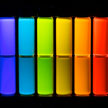 Researchers achieved a milestone in exploring biology using nanotechnology utilizing single-particle tracking to investigate the interaction between human T cells and individual fluorescent nanoparticles of semiconductor quantum dots (QDs). The researchers were able to deliver QDs into the cytosol of live T cells by decorating the nanoparticles with a unique cell-penetrating peptide. The study paves the way for improving drug delivery and immunotherapy using novel nanocarriers.
Researchers achieved a milestone in exploring biology using nanotechnology utilizing single-particle tracking to investigate the interaction between human T cells and individual fluorescent nanoparticles of semiconductor quantum dots (QDs). The researchers were able to deliver QDs into the cytosol of live T cells by decorating the nanoparticles with a unique cell-penetrating peptide. The study paves the way for improving drug delivery and immunotherapy using novel nanocarriers.
Mar 12th, 2021
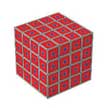 In another step towards engineered living materials, researchers combined living bacteria and 3D-printed materials to grow bionic mineralized composites with ordered microstructures. It provides an example of harnessing living bacteria to design self-growing materials and opens the door for a new class of engineering materials that can self-grow like living creatures. This manufacturing strategy can be easily extended by selectively controlling the activity of living organisms to synthesize unprecedented structural composites with ordered, hierarchical, and gradient microstructures.
In another step towards engineered living materials, researchers combined living bacteria and 3D-printed materials to grow bionic mineralized composites with ordered microstructures. It provides an example of harnessing living bacteria to design self-growing materials and opens the door for a new class of engineering materials that can self-grow like living creatures. This manufacturing strategy can be easily extended by selectively controlling the activity of living organisms to synthesize unprecedented structural composites with ordered, hierarchical, and gradient microstructures.
Feb 23rd, 2021
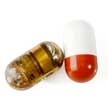 A major challenge in the development of implantable and ingestible biomedical electronic devices is the limited lifetime of their power sources. The energy requirements of these devices are highly dependent on their application and the complexity of the required electrical systems. The power unit, which is composed of one or more energy sources - batteries, energy-harvesting, and energy transfer - as well as power management circuits, supplies electrical energy to the whole system.
A major challenge in the development of implantable and ingestible biomedical electronic devices is the limited lifetime of their power sources. The energy requirements of these devices are highly dependent on their application and the complexity of the required electrical systems. The power unit, which is composed of one or more energy sources - batteries, energy-harvesting, and energy transfer - as well as power management circuits, supplies electrical energy to the whole system.
Feb 16th, 2021
 By using rod-shaped nanoparticles, in combination with inhibitors to other uptake pathways, researchers achieved targeting cancer cells over healthy cells.
The possible benefits from this novel technique are twofold: Restricting healthy cells from taking anticancer drugs to help reduce the side effects of drugs for patients; and helping overcome chemoresistance (the uptake of the chemo drug into healthy cells in the tumor setting is one of the main causes of chemoresistance).
By using rod-shaped nanoparticles, in combination with inhibitors to other uptake pathways, researchers achieved targeting cancer cells over healthy cells.
The possible benefits from this novel technique are twofold: Restricting healthy cells from taking anticancer drugs to help reduce the side effects of drugs for patients; and helping overcome chemoresistance (the uptake of the chemo drug into healthy cells in the tumor setting is one of the main causes of chemoresistance). 
 Subscribe to our Nanotechnology Spotlight feed
Subscribe to our Nanotechnology Spotlight feed





